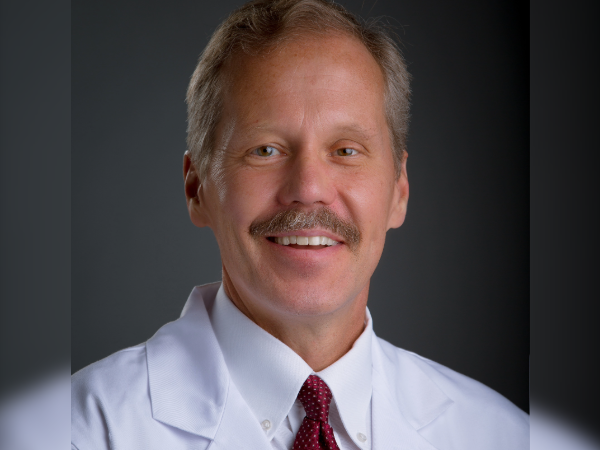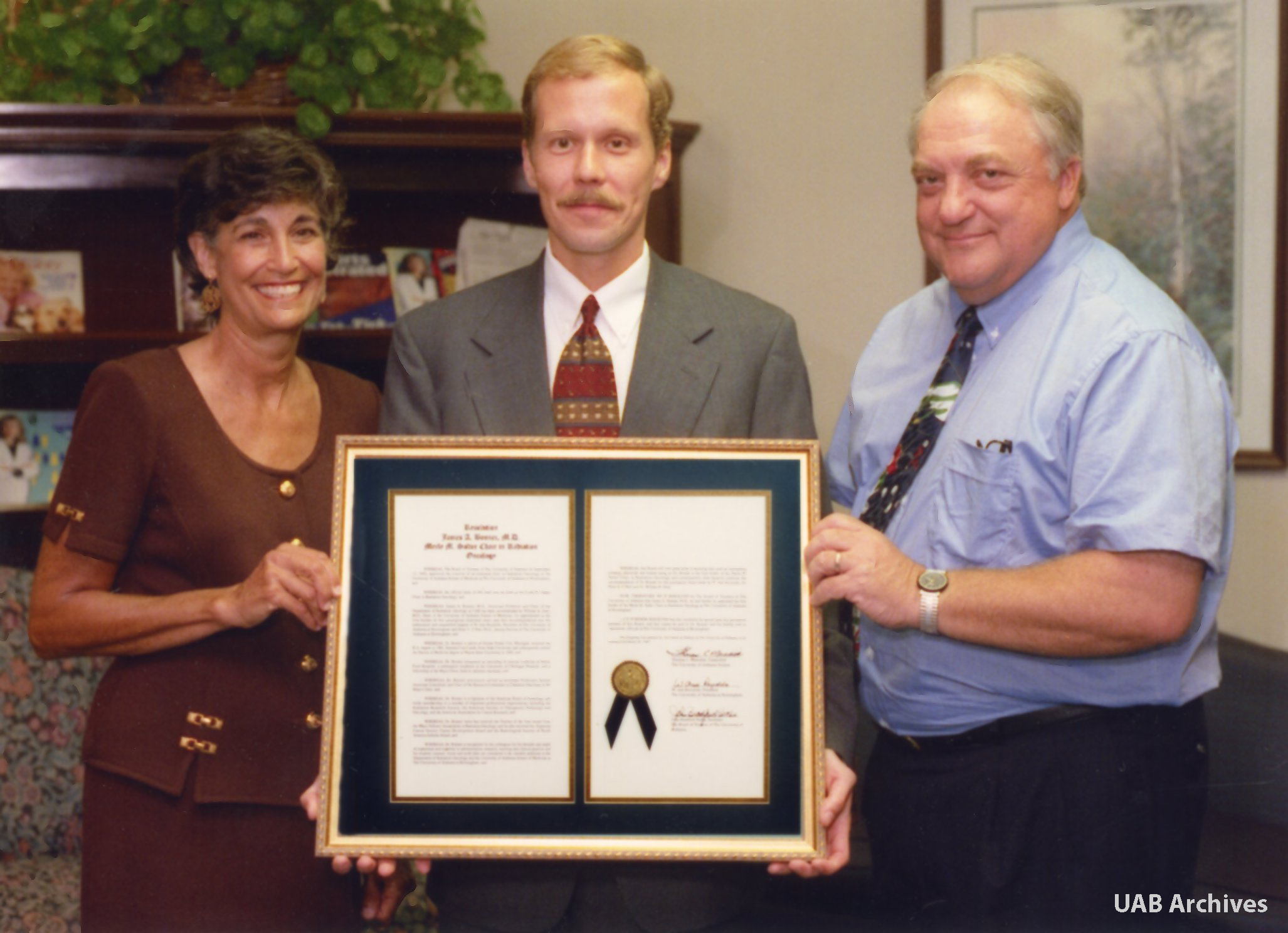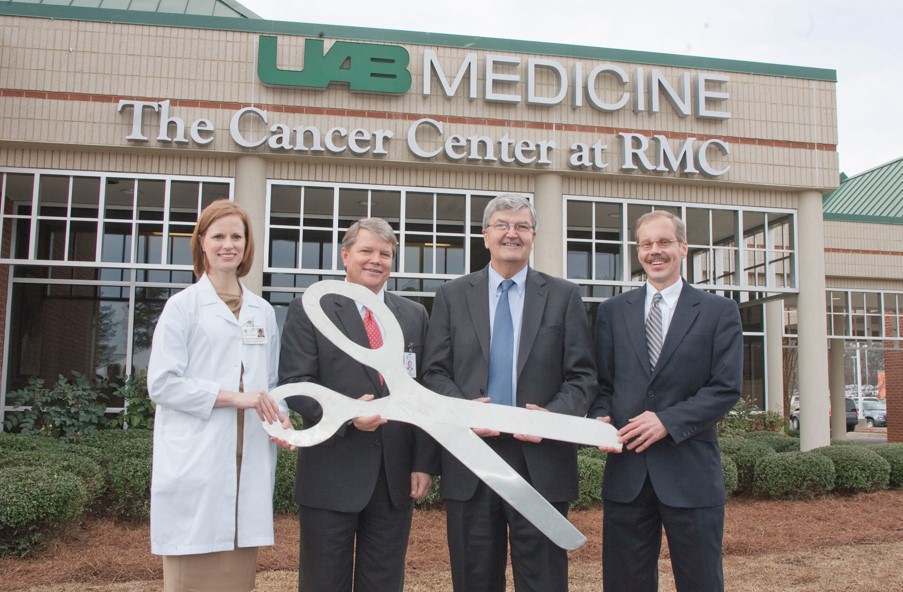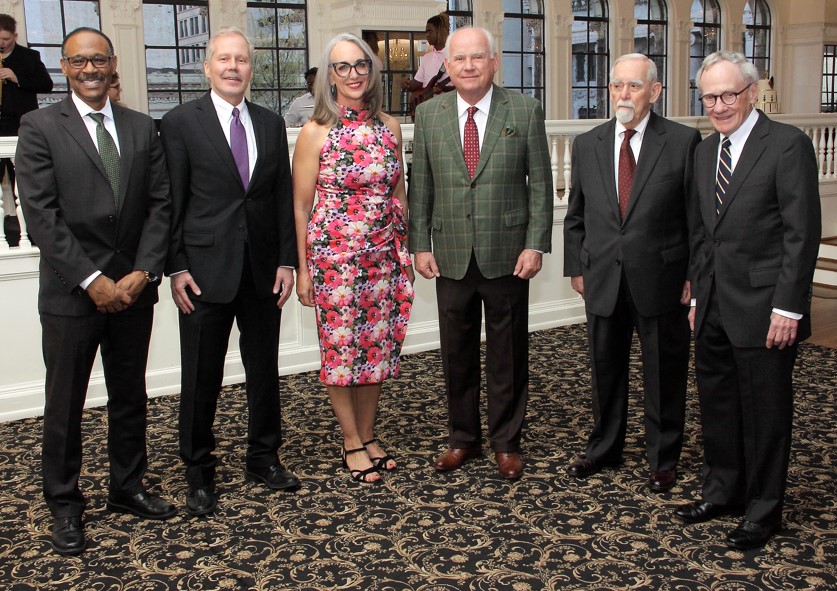
After nearly three decades as chair of the UAB Department of Radiation Oncology, James A. Bonner, M.D., is transitioning to an Emeritus status and will continue to work on research efforts within the department, leaving a legacy of growth, innovation, and excellence.
This article was adapted for web from Rays of Hope: Volume 11, Issue 3, Fall/Winter 2024. Read the full article here starting on page 10.
“It has been an honor of a lifetime to work with such a dedicated group over the last 27 plus+ years,” Bonner said. “I thank you for your great care of our patients and your drive to advance our field.”
Bonner, a Detroit native, pursued a career in medicine after earning a chemistry degree from Duke University and a medical degree from Wayne State. He completed his training in Internal Medicine and Radiation Oncology in Michigan, followed by a research fellowship at the Mayo Clinic, where he led lung cancer research and established a nationally funded laboratory. In 1998, he became chair of the UAB Department of Radiation Oncology, bringing his research and young family to Birmingham.
Since he became chair, Bonner has led the department through major milestones, establishing new clinics, expanding access to care, advancing education, and adopting cutting-edge technology. His leadership helped elevate UAB as a national leader in radiation oncology.
A renowned researcher, Bonner led the landmark trial combining cetuximab with radiation for head and neck cancer—work that changed global treatment standards. He has authored more than 200 publications and mentored countless physicians and scientists.
Bonner also served in key institutional roles, including president of the UA Health Services Foundation and Senior Associate Dean for Clinical Affairs. His collaborative spirit has left a lasting mark across UAB.
Though he is stepping down as chair, Bonner is not stepping away. He will remain a vital part of the UAB faculty in emeritus status.
“I have thoroughly enjoyed my department family and look forward to seeing the group continue to excel,” Bonner said.
In late 2024, Bonner shared his thoughts on the field of radiation oncology and reflected on his time as chairman of the department.

Q: When did you become a physician, and what drew you to radiation oncology?
I thoroughly enjoyed the sciences for as long as I can remember. I started college as a math/chemistry (mostly math) major and found that I was interested in how chemistry functioned in the human body. In college, I volunteered in chemistry research laboratories and in medical clinics and these experiences directed me toward clinical medicine as opposed to pursuing a Ph.D. in chemistry. I was originally attracted to radiation oncology due to the mathematical nature of the field, but I found that the most rewarding aspect of the field was dealing with cancer patients and helping them navigate life-altering times in their lives.
Q: What attracted you to UAB and what kind of future did you see in Birmingham for your career and for your family?
When I was asked to look at UAB, I spent much time with Dr. Albert LoBuglio who was the Cancer Center Director at UAB. He was a very inspirational figure and shared my thoughts about growing the patient base for UAB cancer treatment. I found the culture at UAB to be extremely collaborative and that was a big plus. Finally, my wife came down and loved the community and that sealed the deal.
Q: The Kirklin Clinic at Acton Road opened in 2002, and the road leading into the facility is named after you. What was your role in this endeavor?
We started working on building the Acton Road facility shortly after my arrival. It was a partnership with Internal Medicine and we owned 78 percent of the partnership. It was a joy working with Dr. LoBuglio and Dr. William Koopman of Internal Medicine. We had to put a road in leading to the center of the property and my executive administrator, John Brinkerhoff, who worked very hard on the facility, named the road after me. It probably should have been named after him.
Q: In 2006, you published results of a study in the New England Journal of Medicine that changed the treatment of patients with head and neck cancers. What impact did that study have on the field of radiation oncology and how did that study shape your career going forward?
In 2006, we published the results of a phase III trial that demonstrated an improvement in overall survival for patients with head and neck cancer who received radiation and cetuximab versus radiation alone. The trial was very time-consuming for the five years prior to publication, as I ran the quality assurance with a couple of consultants. We did not use the current central review mechanisms. We met frequently for five years and spent long hours reviewing plans, CT imaging, and study materials on a regular basis. This effort took me away from the department more than I would have liked. At one point, I asked Dr. LoBuglio whether I should continue this lengthy commitment and he said it was paramount to our efforts. After the trial was published, I frequently gave presentations on the results at cancer centers throughout the country and abroad.
Q: You were University of Alabama Health Services Foundation (UAHSF) president for two terms. Why did you take on that role in addition to your duties within our department?
I had been involved with most aspects of the UAHSF, through service on the Board and various committees, prior to becoming president-elect in 2011. Dr. Anton Bueschen, a former HSF President, got me involved with the HSF. Therefore, I felt that my experiences could be helpful if I were to become president. Also, Dr. Will Ferniany encouraged me to apply for the position.
Medicine was going through many changes at the time. When I was HSF president, we went to a Funds Flow system to provide resources to departments, implemented the electronic record, provider-based The Kirklin Clinic, formed an access center, and partnered with the UA Trustees to create an obligated group, which allowed us to lock in our variable debt interest at a very low rate. These efforts, and many others, were done to make our practice more efficient and facilitate more resources and better care for our patients.

Q: Who do you consider some of your mentors or confidants at UAB over the years?
The UAB culture of collaboration in the UAB O’Neal Comprehensive Cancer Center makes me feel that all members are mentors. I learn daily from senior faculty, junior faculty, and trainees. It is a great environment. As I mentioned earlier, the UAB culture was an initial driver for me to come to UAB. This helpful and supportive culture continues to make UAB a terrific place to work and care for patients while performing outstanding research.
Q: When you look at the field of radiation oncology, did you expect it to change as it has over the last 50 years? What has surprised you about this field?
The technological advancements over the last 50 years have been incredible. When I was training at the University of Michigan in the mid-1980s, Dr. Allen Lichter had the vision of working to make radiation treatments more focused around the tumor (using advanced physics principles), in order to minimize normal tissue complications, through the use of complex 3-D planning. Efforts of this nature eventually led to intensity-modulated radiation therapy (IMRT), volumetric arc therapy (VMAT), adaptive therapy and the use of artificial intelligence (AI) to define structures. These advances will continue, and we will work with our colleagues in medical oncology and surgical oncology in order to develop the best methods of integrating the treatments afforded by our disciplines.
Q: What sticks out in your mind about your personal accomplishments, fulfillment, and your best memories from your chairmanship?
I view my top personal accomplishment as the recruitment of outstanding personnel to our center. I have been so fortunate to be able to hire a terrific group of faculty, trainees, and staff. Our group exemplifies a culture of cooperation and a common goal of working to achieve the best outcome for each patient. This goal involves great clinical care, great technology, great research, and most of all, compassionate, extremely competent, and knowledgeable caregivers. Of course, these recruitment efforts are not a personal accomplishment but a concerted effort by many individuals. Our program has grown our footprint and helped our group offer “state-of-the-art” care to all areas of the state and surrounding states. It has been a pleasure to work with our great employees.
Q: What’s next for you after you transition out of the chair role?
Currently, I plan to stay in the department and work with our great group of people. I believe that I can help with current signal transduction/immunotherapy efforts in our laboratories and clinical assessments of adaptive therapy in head and neck cancer.
I also look forward to seeing new advances in cancer treatment from our group. This group is poised to do great things in the future. We continue to lead on the technology front, our laboratories are investigating the latest immunotherapy/radiation concepts, and we have stellar trainees in medicine and physics.
